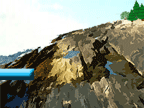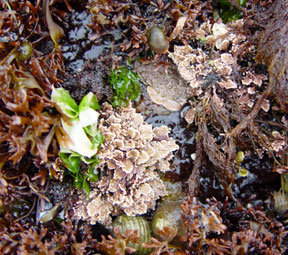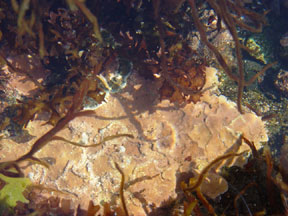 |
 |
|||||||||||||||
|
Corallina officinalis or coral weed (upper left) is another familiar species in the subtidal zone and in tide pools. This unique algae incorporates calcium carbonate into the structure of its blades, giving it a tough outer covering. This calcium carbonate feature also allows the coral weed to remain upright when exposed instead of collapsing to the substrate. Growing in bushy tufts, the blades are jointed allowing for flexibility to move with the wave motion. A crustose algae (above right) is commonly found from the mid to subtidal zones. Growing on the floors of tide pools, on rock surfaces, and on the shells of snails, this mat forming algae has a hard surface. Positive identification of the species requires microscopic study. |
||||||||||||||||
|
||||||||||||||||
|
||||||||||||||||



